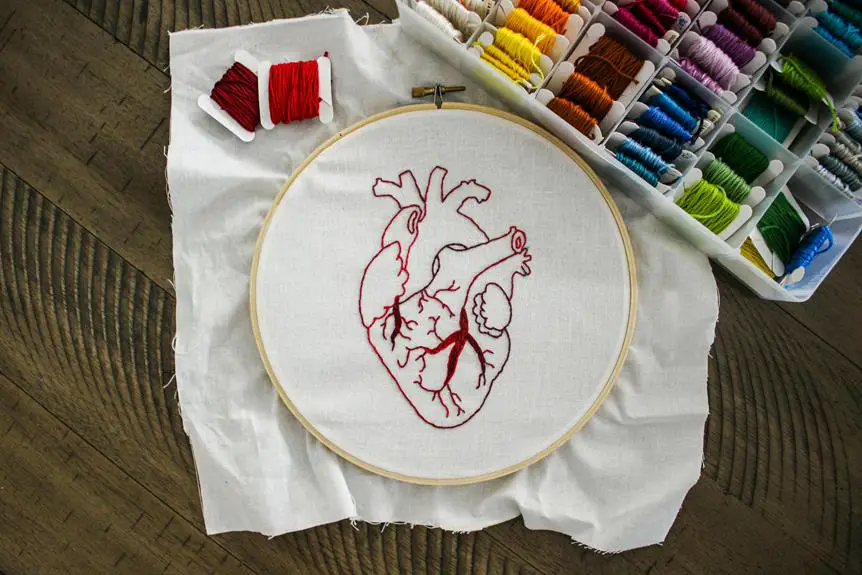When you think about chenille production, it's easy to overlook the environmental consequences behind the cozy fabric you love. You might not realize how much water it consumes, or the harmful chemicals involved that seep into our ecosystems. The energy it requires results in a considerable carbon footprint, while the waste generated adds another layer of concern. As you explore these impacts, consider what other aspects are often ignored and whether sustainable alternatives could change the landscape of chenille production for the better.
Table of Contents
Water Consumption in Production
Chenille production requires significant water consumption, impacting local water resources and ecosystems. When you consider the entire production process, you'll find that water is crucial at multiple stages, from growing the raw materials like cotton to processing the fibers.
This high water demand can lead to depletion of nearby rivers and lakes, affecting both agricultural and natural habitats.
As a producer or consumer, you should be aware that excessive water use can create a ripple effect in local communities. This not only disrupts drinking water supplies but can also hinder irrigation for other crops, straining food resources.
If the water table drops too low, it can lead to soil degradation, making it even harder to grow essential crops for communities that depend on them.
Moreover, the environmental balance suffers due to diverted water flow, impacting local ecosystems and wildlife.
To mitigate these effects, consider sourcing chenille from manufacturers committed to sustainable practices. They may adopt methods that minimize their water usage, ensuring that production doesn't come at the expense of local environments.
Recognizing these challenges empowers you to make more sustainable choices in the chenille market.
Chemical Usage and Pollution
The production of chenille often involves harmful chemicals that can lead to significant pollution, affecting both air and water quality in surrounding areas. You mightn't realize just how detrimental these substances can be. The use of toxic dyes, solvents, and cleaning agents can create a cocktail of pollution that seeps into the environment.
Toxic Dyes: Many dyes employed in chenille manufacturing contain heavy metals, which can leach into water bodies, harming aquatic life and potentially entering the food chain.
Solvents: Solvents used for cleaning machinery often release volatile organic compounds (VOCs) into the air, contributing to respiratory problems for workers and nearby residents.
Wastewater Contaminants: The disposal of wastewater can introduce harmful chemicals into local water systems, leading to long-term ecological damage.
Minimizing chemical usage and exploring greener alternatives can significantly reduce these adverse effects. By staying informed about these issues, you can help support more environmentally responsible practices in the chenille industry.
Energy Requirements and Carbon Footprint
Producing chenille requires significant energy, contributing to an increased carbon footprint that poses risks to the environment. From the sourcing of raw materials to the manufacturing processes, energy consumption is widespread across all stages of production. You mightn't realize it, but these stages often involve heavy machinery, which operates on fossil fuels, amplifying greenhouse gas emissions.
In addition, the dyeing and finishing processes utilize high amounts of energy, further exacerbating the situation. If you're concerned about the climate, you should understand that this energy-intensive production not only contributes to global warming but also affects air quality.
The reliance on non-renewable energy sources leaves a long-lasting impact, as it leads to depletion of resources, making sustainable alternatives crucial.
To lessen your carbon footprint, consider supporting brands that prioritize energy-efficient practices. By choosing products made from recycled materials or produced using renewable energy, you help drive demand for sustainable practices within the industry.
You have the power to influence change by making informed choices, and it starts by being aware of the energy requirements tied to chenille production. Your choices matter; they can contribute to a healthier planet.
Waste Generation and Disposal
Waste generated during chenille production poses significant challenges for both manufacturers and the environment.
Waste management and disposal are critical issues that require attention.
Three major types of waste are generated in the chenille production process.
Fabrics and Fibers
Offcuts and scraps from the cutting and sewing processes contribute to fabric waste, often ending up in landfills if not repurposed.
Chemical Byproducts
The dyes and finishes used in chenille production may produce hazardous waste. These chemicals can seep into soil and water sources if not disposed of correctly.
Packaging Waste
Excessive packaging materials, like plastic wraps and cardboard, are commonly used. Improper disposal of these materials leads to further environmental degradation.
Addressing these waste generation issues is essential for understanding the broader environmental impacts of chenille production.
Sustainable Alternatives and Solutions
Exploring sustainable alternatives in chenille production can significantly reduce environmental impacts while promoting eco-friendly practices. You can start by choosing organic fibers instead of traditional polyester, as these are biodegradable and require fewer chemicals to cultivate. Natural fibers like cotton and bamboo are excellent options, as they minimize harm to ecosystems.
In addition, consider sourcing local materials to cut down on transportation emissions. Supporting local suppliers fosters community growth and reduces your carbon footprint. You should also look into recycled fibers, which can help create chenille products while diverting waste from landfills.
Implementing closed-loop systems during production is another way to enhance sustainability. This means recycling water and minimizing waste, which not only protects resources but also lowers costs. Using eco-friendly dyes can further contribute to this advocacy; these dyes are less toxic and reduce harmful runoff.
Frequently Asked Questions
What Materials Are Used in Chenille Production?
In chenille production, you'll find cotton, rayon, and acrylic as primary materials. These fibers create a soft texture and vibrant colors. You'll appreciate their versatility in various applications, from upholstery to clothing and home decor.
How Does Chenille Compare to Other Fabrics Environmentally?
When you compare chenille to other fabrics, you'll notice it's often made from synthetic materials, which can be less environmentally friendly. However, some producers are adopting more sustainable practices, making it a more eco-conscious choice lately.
What Is the History of Chenille Production?
You'll find that chenille originated in France during the early 19th century, gaining popularity for its unique texture. It's been used in various textiles, evolving in production methods and designs throughout the years.
Are There Certifications for Sustainable Chenille Production?
Yes, there are certifications for sustainable chenille production. You should look for certifications like Global Organic Textile Standard (GOTS) or Oeko-Tex, which ensure environmentally friendly practices and safe materials in the textile manufacturing process.
How Can Consumers Choose Eco-Friendly Chenille Products?
You can choose eco-friendly chenille products by looking for certifications like Oeko-Tex or GOTS. Check product materials, support brands committed to sustainability, and read reviews to ensure environmentally responsible manufacturing practices are in place.
- How Does Ring Spun Cotton Affect Garment Fit and Shape Retention? - August 13, 2024
- What Are the Challenges in Producing Ring Spun Cotton? - August 13, 2024
- Is Ring Spun Cotton Suitable for Plus-Size Clothing? - August 13, 2024






